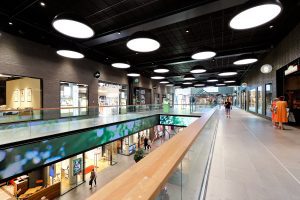The Texas grid came within “second and minutes” of a grid outage that could’ve lasted months. I think it’s time to raise the sense of urgency around grid modernization and resiliency.
I wrote about this back in October 2019, when vast swathes of California were gripped by proactive grid shutdowns. And although the two states’ outages may have been caused by different weather extremes, many of the infrastructure solutions remain the same. I’ll talk about two of them in this post.
The challenge: A grid even Edison would recognize
As climate change accelerates extreme weather events, infrastructure ages, and rising populations demand more energy, the big question both utilities and their customers must face is this: How do we keep energy flowing reliably, safely, and sustainably?
To answer this question, it helps to consider what’s changed, and what hasn’t, since 1977, the year I was born. Telecommunications technology is nearly unrecognizable and, more broadly, information technology has experienced breakthroughs in every field. But electrical infrastructure? Even Thomas Edison would recognize it.
Now’s the time to work together to transform the way we produce, transmit, and consume electricity. Although there are a few magical, pie-in-the-sky ideas out there that are certainly interesting to discuss, I want to share a few pragmatic ways we can start.
The solutions: Digitalization, decentralization, and decarbonization
The first step: Harness IoT connectivity to monitor critical infrastructure assets like the smart grid.
To do this, we can consider the spiritual insight, “everything is connected,” as a strategic objective. The smart grid is already home to billions of smart devices. But just because we’ve deployed these devices doesn’t mean we’re getting the most out of them.
Meters, relays, and sensors need to be connected to sophisticated analytics and management tools. With these smart grid solutions, you can do more than pinpoint outages. You can automate fault detection, streamline proactive maintenance, and thus enhance performance and reliability. The video below shows how smart grid solutions bolster resilience during extreme weather.
The second step is to promote decentralized alternatives such as microgrid technology. Microgrids work seamlessly alongside the grid to provide redundant power to buildings, industrial sites, and critical infrastructure like hospitals and data centers. They also encourage renewable energy integration, driving decarbonization efforts.
The proposition of building and operating a microgrid may sound daunting, but it shouldn’t be. With Energy as a Service (EaaS) financing models, organizations can deploy microgrids for zero upfront costs and no responsibility to build, operate, or maintain them. That’s made it possible for many companies and organizations to gain access to resilient, decarbonized backup power.
Successful use cases of digitalized, decentralized, and decarbonized infrastructure
I’ve seen the success of microgrid technology at critical sites around the country. Here are just three:
- In the aftermath of destructive wind storms, Montgomery County, Maryland bolstered resiliency by deploying two microgrids and modernized power distribution systems in their critical sites. Using EaaS, the county avoided capital expenses.
- The Port of Long Beach, CA, the second-busiest port in the U.S., is on a mission to zero emissions and high power reliability. A new microgrid will integrate renewable energy and support the port’s Joint Command and Control Center.
- JFK Airport’s Terminal One renovation will feature EaaS microgrids through our joint venture with the Carlyle Group, called AlphaStruxure.
To replicate these successes across the country will require all players to work together. Building new infrastructure and improving on current systems is challenging, especially when utilities are expected to make these changes without downtime and amidst an ever-increasing demand for energy. Using IoT and decentralized power minimizes these hurdles and thereby accelerates us into a world where the California and Texas outages become a thing of the past.
Building a grid fit for our children’s children
We at Schneider orient our business around future generations. It’s part of our commitment to be carbon neutral in our operations by 2025. It’s why we were ranked by Corporate Knights as the world’s most sustainable company in 2021. And it’s a part of our goal of creating a resilient, 21st century-ready grid.
I also invite you to take a seat at the table as we continue this conversation. How are you addressing the challenges of improving infrastructure? What technologies are you eager to explore? Share your experience, hurdles, and hopes in a comment below.


Conversation
Apparently the author of this does not live here. The climate change reality is we do and have had much higher winds that now. The climate has not changed in the short 40 plus years I have lived here, but the political climate has. My understanding is that PG&E has had environmentalists restrict clearing near overhead lines and the State has not cleared forests for the same reasons. As far as micro-grid power, I was with a group some years back when we had power shortages and set up a program with generation that could run independent or export power for commercial buildings. PG&E met with us and would not allow us to connect to the grid at that time. Hopefully we can get political climate change to improve things.
This post fails to consider that a failing power line starts a fire almost immediately, and that monitoring is only going to warn that the line has failed. And the microgrids do not help much unless there is some supply of power. The cause of the failures is, and has been, poor designs of the distribution system. Poles and towers spaced way too far apart, and wires hanging too close to each other, as a means of cutting costs while building the system. In addition, inadequate clearing of the areas arund the transmission lines sets the stage for a lot of wind-induced failures.
In introductory paragraphs you ought to provide short definitions for ‘smart grid’ and ‘micro-grid’.
This is pure fantasy and not a solution, more liberal excuse making on climate, which you and nobody else can blame but do. Bottom line, too many customers using the old existing system which no one has bothered to fix or upgrade or plan for in the past 40 years plus! The equipment has not kept up with the demand and reason is the cost or expense not the climate.
Thanks so much for giving everyone an update on this subject on your site. Please realize that if a fresh post becomes available or if perhaps any changes occur about the current write-up, I would want to consider reading a lot more and understanding how to make good usage of those tactics you reveal. Thanks for your efforts and consideration of other folks by making this web site available.
https://all4webs.com/wedgesalary55/uoafsgivpk930.htm
Schneider is doing an excellent job by setting up microgrids to facilitate continuous power supply for essential services and community during bad weather conditions by making use of local solar forms and green energy from distributed resources thereby reducing greenhouse gases.
I have one question about the Solar Mega form. What is the contribution of the panels towards temperature rise due to solar reflection from its surface and heat generated by power loss in its components (resistance of connecting wires, inverter, etc,)
Happy Thanksgiving, Take Care and Stay safe
While several alternatives to Com Ed exist in my area or at least as a backup system, Solar, as much as they say it costs nothing while they sign you up for a 20-year contract, ends up not being attractive. Natural Gas Fuel Cells are also an alternative to large corporations. However, they will not sell smaller ones less than 200KW, which might be good for a community, but not for an individual. That leaves the small 5-10KW home generator as the last choice fueled by natural gas or propane. We sure need a solution now.
The solar panels change where the incident solar energy goes. They are not a creator of energy. If the panel installation replaced a rooftop or similar surface that is dark, then their local energy placement is only a net reduction of energy equal to the electrical energy output by the panels. If the surface was white then there is a net decrease in the near IR radiation back to the sky which results in local surface and air heating, but again the electrical energy the panels output needs to be remembered. If the panels are above fields or soil there is a decrease in energy stored in the surface underneath but also a reflection of energy radiated from the surface back to it during the night.
An interesting topic to pursue.
I worked for CPSB, when it was the electric and natural gas distribution utility for San Antonio, Texas and the surrounding counties. I was there during the 1978 ice storm. CPSB was the utility that was prepared and helped other utilities in Texas. I know for a fact that the 2021 outages were caused by the lack of winterization by many of the utilities. My career in working for utilities has convinced me that a majority of engineers working there grow up to know how to spend as little as possible in construction, operations and maintenance and replacement. Probably they are convinced that good performance, leading to promotions and raises, is defined as minimum spending. When the engineers considered the cost of winterization, it was easy for them to believe they could save money.
What about the price gouging of electric bills due to the storm? That doesn’t seem right. Insurance should be paying for the damages. That’s their job, not the customer’s.
Perhaps we should take a look at the real causes of the extreme weather and investigate how we can find a way to limit the extremes. I am not saying that we should not continue to fix the grid and harden it to weather and other causes, but if we don’t resolve one issue we will never fix the other.
We should also investigate the feasibility of getting all the electrical grid underground, that would make it harder for breakdowns except in cases of earthquakes.
Our most recent project created a power system for refining biodiesel. Twin windmills, two diesel generators. Each unit can power the system allowing customers to produce biodiesel that can replenish the generator fuel tanks.
Except one thing – you have erred in defining the problem. Texas nearly fell because Texas -arrogantly – refuses to connect to the rest of the nation, believing what is Texas is superior. The rest of the nation was powerless to help Texas, phasing is not synchronized. And, Texas refuses to help the rest of the nation when they can, believing that Texas is superior.
The problem here was not the grid, it was human arrogance.
But, as the Progressives chant their mantra, never let a crisis go to waste. Lie about it, scare anyone you can, use fear to the maximum to justify what you want. You have done well at that.
Readily available fossil fuels should not be ignored, but instead updated for use in providing clean energy especially in serving “microgrids” supporting essential services.
Replying to Sam Palermo’s comment, There are solutions for residential micro-CHP systems and the specialized system to control and distribute the electrical and thermal energy in a residence. While most try to address your energy needs they ignore the fact 60% or more of the energy used in residential applications is thermal. Storing thermal energy is a lot less expensive than electrical energy in batteries and the storage system does not degrade over time. A Natural Gas or Propane fired micro-CHP unit is a very efficient source of energy, combined with renewables, thermal storage and some batteries becomes a very resilient system. It’s applied in what we do for residential energy resiliency solutions at Energy Security, Inc.